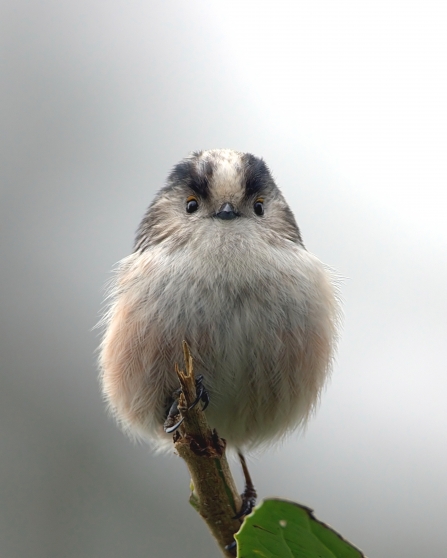
Autumn colours at Veilstone Moor nature reserve
Location
Know before you go
Dogs
When to visit
Opening times
Open at all timesBest time to visit
May to SeptemberAbout the reserve
Veilstone Moor is a good place to get to know the special wild landscape known as Culm.
Every type of Culm is here. Walk through the reserve and you'll move from dry heathland grasses, past water-filled ditches to damp wildflower-rich meadows and even quaking mires. The latter can mean you feel the earth move beneath your feet as you walk!
Ash dieback
The disease ash dieback is now widespread in the UK and is present at many of our nature reserves, so we carry out tree felling across our sites in winter months. For your own safety please observe temporary path diversions and closures.
Where possible we will leave affected ash trees in place to decay naturally as an important habitat for wildlife. We plan to only fell diseased ash trees which pose a threat to people or infrastructure. Before trees are felled, we will check whether any rare or protected wildlife is present. If it is, we will postpone or avoid felling these trees. No felling will take place during the bird nesting season.
DWT’s Saving Devon’s Treescapes project are working with communities, landowners and businesses to help make Devon's precious treescapes more resilient in the face of ash dieback. Find out how you can get involved here.
NOTICE: If you are visiting our reserves, please note that there have been instances of H5N1 Avian bird flu found in birds in Devon. There is very low risk to public health, but we do ask that if you come across any unusual or unexplained bird deaths on or near our reserves, please do not touch them and avoid allowing your dog to come into contact with dead birds. Please report them to Defra here or call 03459 335577 and also report your findings to DWT by email at contactus@devonwildlifetrust.org.
Contact us
Environmental designation

Look out for parties of long-tailed tits in the hedges and trees of Veilstone Moor
Old hedge banks now provide wildlife corridors through which small mammals including stoats, weasels, field voles and wood mice move. In winter fieldfares, mistle thrushes and redwings come to feed on the hedge harvest of hips, sloes and hawthorn berries.
Two blocks of woodland show signs of badgers. Family groups of long-tailed tits forage in the the canopy, while roe deer can be spotted here grazing at the trees' edge where it meets the reserve's fields of Culm grassland.
In summer these fields are dotted with the colours of Culm wildflowers. The yellows of meadow buttercups and bird's foot trefoil feature strongly, while blue is provided by Devil's scabious and purple by early purple orchids.
Veilstone has the air of a wild place and its paths are not always well defined. But if you take a sense of exploration with you there are rewards to be had here. You're unlikely to meet many fellow visitors. This is a quiet corner of Devon, in which your company is the local nature.
Look for weasels scampering among the reserve's hedge banks. Photo, Terry Longley



